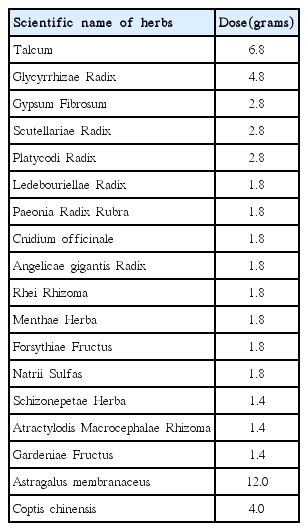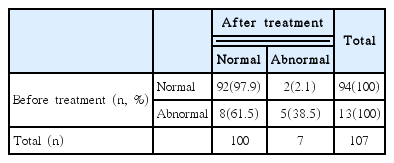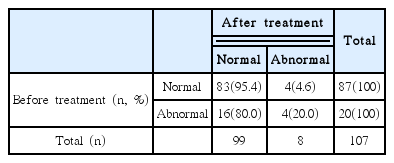References
1. Boyman O, Conrad C, Tonel G, Gilliet M, Nestle FO. The pathogenic role of tissueresident immune cells in psoriasis. Trends Immunol 2007;28(2):51–7.
2. Korean Dermatology Association. Dermatology 5th edth ed. Seoul: Ryo Moon GakPCo; 2008. p. 241.
3. Youn JL. Psoriasis Clinic Seoul: Designmeca; 2004. p. 102.
4. Youn JL. Etiology & Treatment of Psoriasis Update Seoul: Designmeca; 2006. p. 7–8.
5. Kim NK, Hwang CY, Lim GS. The Oriental and Occidental bibliographic Study of Psoriasis. The Journal of Oriental Medical Surgery, Ophthalmology & Otolaryngology 1999;12(1):154–76.
6. Hong SH. Reviewing Research on Korean medical treatment of Psoriasis. The Journal of Korean Medical Ophthalmology & Otolaryngology & Dermatology 2013;26(4):26–42.
7. Fredriksson T, Pettersson U. Severe psoriasis–oral therapy with a new retinoid. Dermatologica 1978;157:238–44.
8. Kimball AB, Jacobson C, Weiss S, Vreeland MG, Wu Y. The psychosocial burden of psoriasis. Am J Clin Dermatol 2005;6(6):383–92.
9. Weinstein GD, White GM. An approach to the treatment of moderate to severe psoriasis with rotational therapy. J Am Acad Dermatol 1993;28(3):454–9.
10. Kim SY, Yun SJ, Lee JB, Kim SJ, Won YH, Lee SC. A comparison of efficacy and adverse reactions between Methotrexate and Cyclosporin A. Korean J Dermatol 2014;52(9):615–21.
11. Bangert CA, Costner MI. Methotrexate in dermatology. Dermatologic Therapy 2007;20:216–28.
12. Grossman RM, Chevert S, Abi-Rached J, Blanchet F, Dubertret L. Long-term safety of cyclosporine in the treatment of psoriasis. Arch Dermatol 1996;132(6):623–9.
13. Kalb RE, Fiorentino DF, Lebwohl MG, Toole J, Poulin Y, Cohen AD, et al. Risk of Serious Infection With Biologic and Systemic Treatment of Psoriasis: Results From the Psoriasis Longitudinal Assessment and Registry (PSOLAR). JAMA Dermatol 2015;151(9):961–69.
14. Park YC, Park HM, Lee SD. Inducible Mechanisms for Hepatotoxicity caused by Traditional Korean medicines in a view of toxicology. J Korean Oriental Med 2011;32(4):48–67.
15. Lee E, Park BW, Hea GJ, Ko H. A study on the side effects and toxicity of herbal medicine. Korean J Orient Int Med 2002;23(2):222–7.
16. Lee SY, Cheong JO, Yang TK, Koo BH. The feasibility and safety of herbal medication on short strature. Korean J Orient Int Med 2001;22(4):513–7.
17. Park SU, Jung WS, Moon SK, Go CN, Cho KH, Kim YS, et al. Clinical trial to evaluate the efficacy and safety of Tongxinluo in high risk group of cardiovascular diseases. The Korean Journal of Joongpoong 2005;6(1):25–32.
18. Bae SH, Park SU, Kang CW, Hong SH. Safety of korean herbal medicine used with western medicine on liver function: prospective observational study. Korean J Orient Int Med 2013;34(2):192–203.
19. Lee SY, Kang HJ, Jung MY. Case report of efficacy and safety of long term medication of Oncheongeum-gamibang. Korean J Oriental Physiology & Pathology 2013;27(2):268–72.
20. Lee JS, Lee SD. Effects of Liver Function on Blood of Drug Users(Herbal and Western) in Koreans. Kor. J. Oriental Preventive Medical Society 2004;8(1):59–74.
21. Yang JI, Lee KH, Kim YS, Shin MK, Yoo JH, Chang GT. A report on liver function tests of 82 psoriasis patients taking herbal medication over 3 months. J Korean Oriental Med 2012;33(3):95–104.





